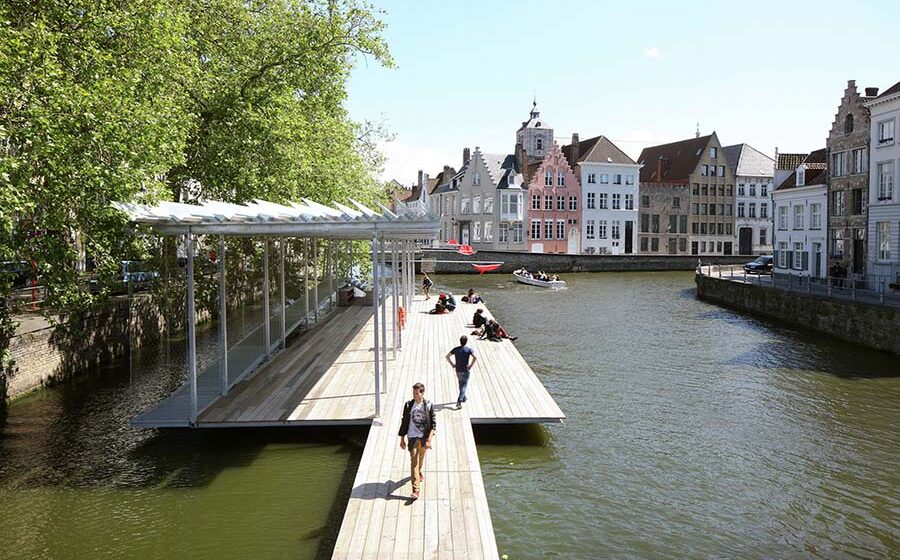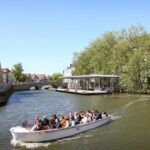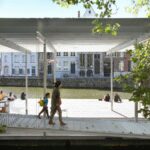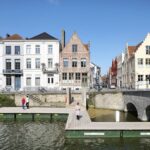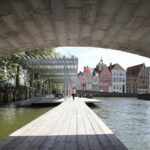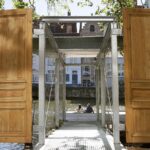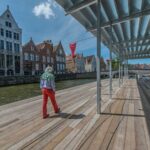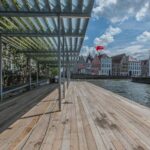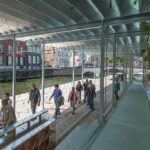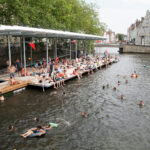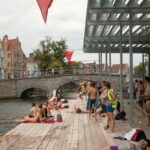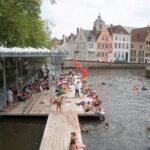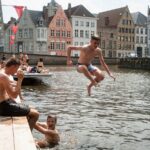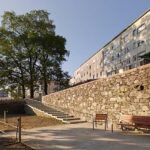In 2015, the city of Bruges revived its Triennale for contemporary art and architecture, drawing inspiration from its historical art exhibitions in 1968, 1971, and 1974. This edition posed a provocative question: ‘what if the medieval ‘egg’ of Bruges were suddenly transformed into a metropolis?’ The city, frequented by 5 million tourists annually, explored the scenario of these tourists choosing to stay permanently.
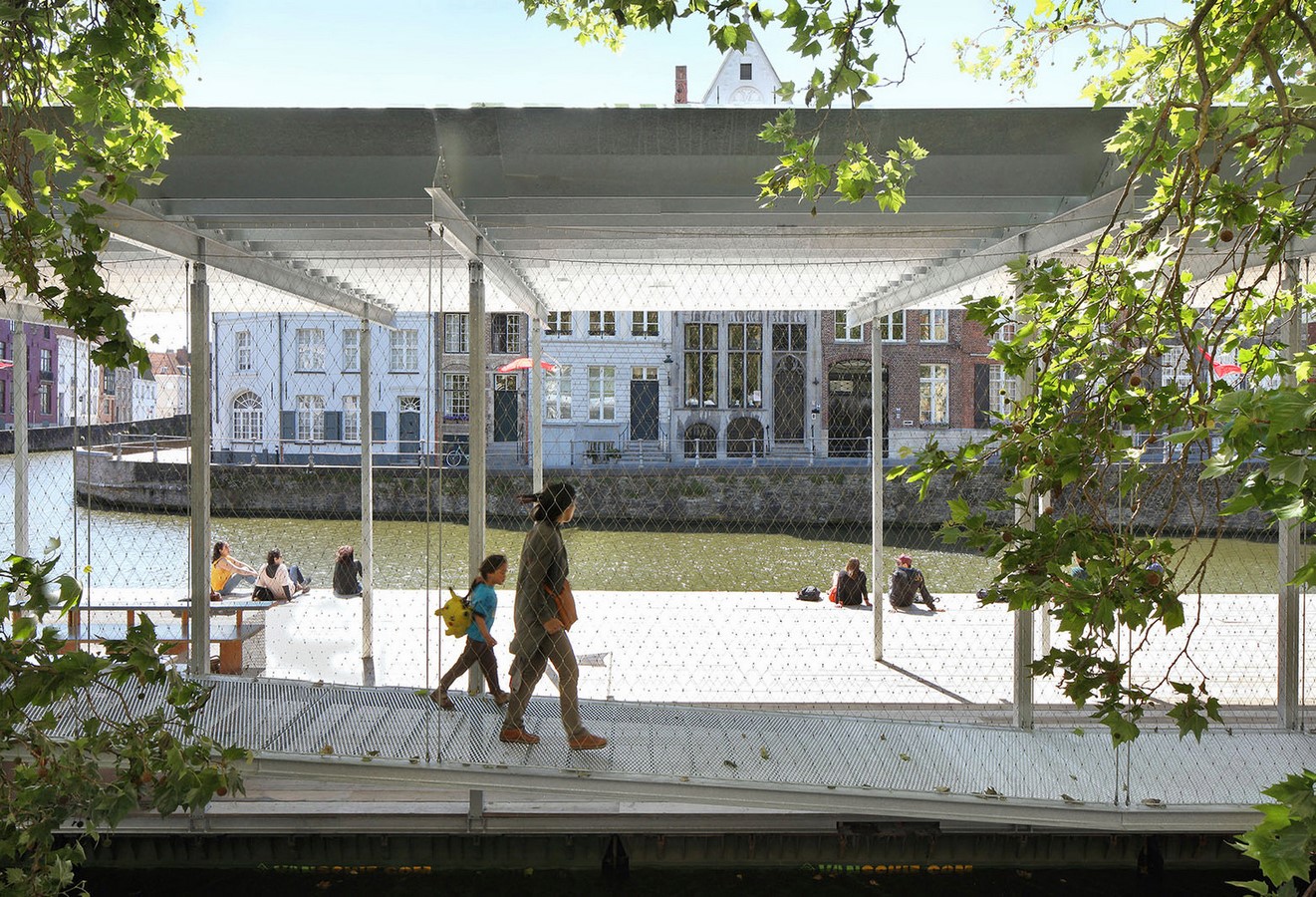
Project Overview
Atelier Bow-Wow and Architectuuratelier Dertien 12 collaborated on the project Canal Swimmer’s Club, as part of the Bruges Triennale. This initiative aimed to create a multifunctional public space along the canals of Bruges, catering to meeting, relaxation, sunbathing, and even swimming.
Concept and Design
The project aimed to reclaim public space from the city’s relationship with water, highlighting both the degradation and enjoyment caused by human interaction with water bodies. The design included a sunbathing platform intended to encourage swimming in the canal, an activity prohibited for 40 years due to poor water quality.

Infrastructure and Accessibility
Divided by the “Carmersbrug,” the site featured two distinct areas. One side provided direct access for swimmers, while the other accommodated tourist boats, where swimming remained restricted. The design incorporated platforms linked by a path under the bridge, ensuring accessibility, including provisions for people with disabilities.
Sustainable Design
The platform, designed for seasonal use, featured a galvanized steel structure assembled on rented military pontoons. A pergola made of Z-shaped louvers covered 60% of the platform, offering protection from sun, wind, and rain, while allowing natural ventilation. Rainwater collected by the louvers was drained directly into the canal. The floor utilized recycled wood planks, and safety was ensured by a steel wire net enclosing ramps, stairs, and bridges.
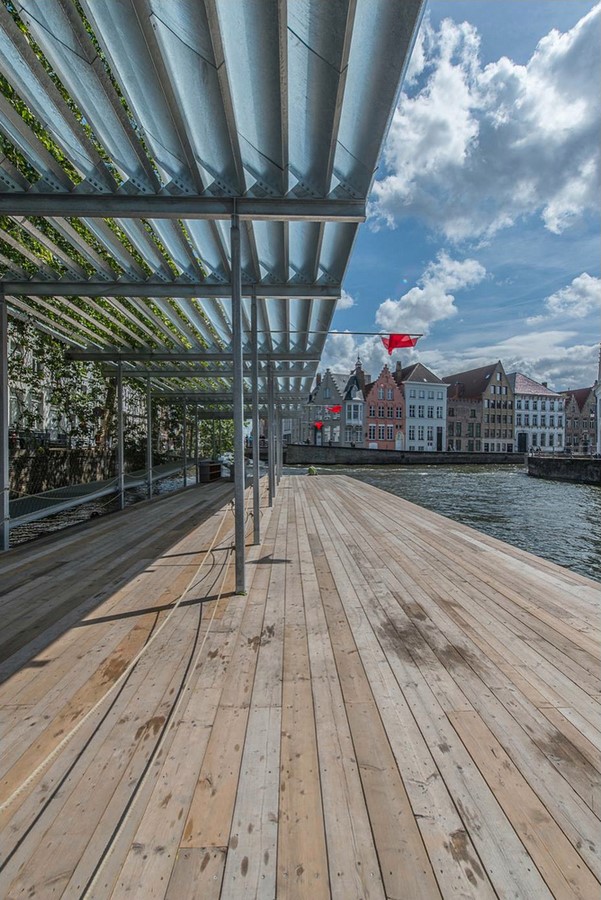
Social Impact and Public Engagement
Named the ‘Canal Swimmer’s Club,’ the project aimed to reclaim and redefine public space within a bustling tourist center. It not only expanded public areas but also symbolized improved water quality, signaled by the return of swimmers to the canal. The initiative encouraged diverse groups, including youth and the elderly, to engage with the city’s waterways.
Cultural and Architectural Significance
The project challenged traditional notions of public space, leveraging the city’s historical and contemporary relationships with water as architectural and cultural resources. It underscored a critical stance against institutionalized space, emphasizing the transformative potential of existing urban behaviors.

Conclusion
The Canal Swimmer’s Club exemplifies innovative architecture and public space design, utilizing the city’s waterways as a dynamic platform for social interaction and cultural expression. It represents a forward-thinking approach to urban revitalization and environmental stewardship, showcasing Bruges’ commitment to sustainability and community engagement.

